That is the statement of Le Quoc Thinh, Director of Cuc Phuong Tourism Services Joint Stock Company (Vedana Resort) when introducing events aiming at promoting Cuc Phuong and Ninh Binh tourism after a long period of shutdown due to COVID-19.
    |
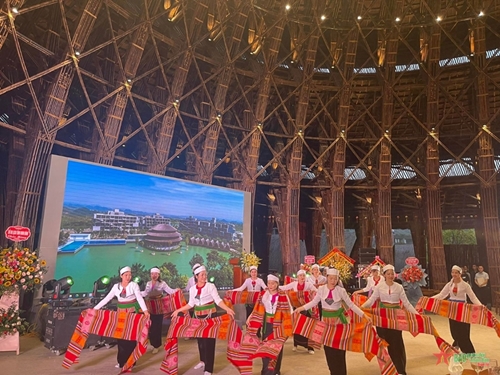 |
|
The Muong ethnic cultural identity is the highlight of Cuc Phuong Jungle. |
According to Chairman of Nho Quan district People’s Committee Hoang Khac Tiep, “Nho Quan is endowed with many historical relics and landmarks such as Van Trinh cave, Yen Quang lake, Dong Chuong lake, Cuc Phuong hot mineral water.” In particular, with the natural reserve area and new-stone-age cultural relics, Cuc Phuong National Park has received the title of Asia's leading national park for two consecutive years (2019, 2020) rated by World Travel Awards.
    |
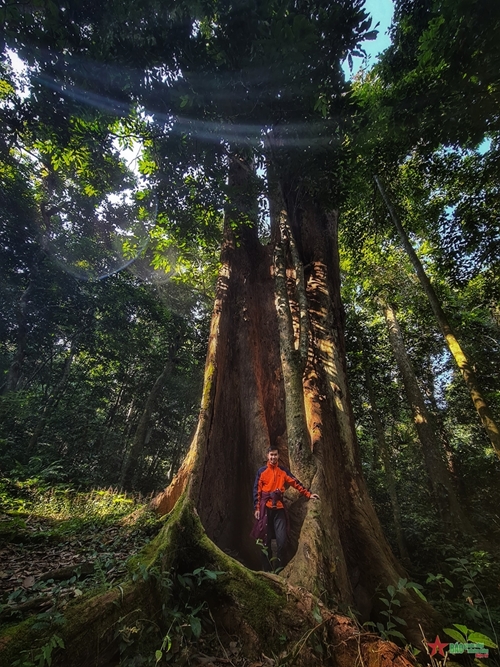 |
|
A thousand-year-old tree in Cuc Phuong Jungle |
It is worth mentioning that Nho Quan has nearly 30,000 ethnic people living in Muong villages. The strategy set by the district is to exploit existing indigenous cultural elements to combine with the trend of ecotourism, which is thriving in Ninh Binh province.
Tourists have opportunities to enjoy many art forms such as Muong love-duet singing in Cuc Phuong commune, gong playing in Ky Phu and Phu Long communes, traditional dishes or forms of homestay with stilt-house tourism, kiosks for fishing in lakes.
Built on a rocky outcrop, with an area of more than 15ha, which cannot be used for farming, Vedana Resort is considered a success of Nho Quan district in attracting investment to develop “green tourism” in the locality.
    |
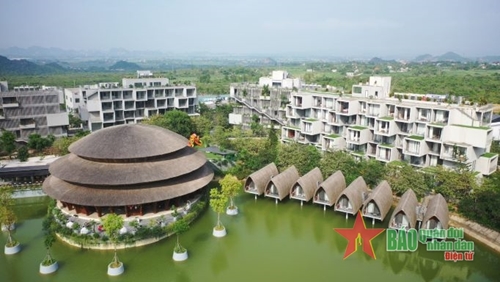 |
|
Vedana Resort - the eco-zone designed and built by architect Vo Trong Nghia with bamboo as the main material |
The highlight of the green tourist complex is the bamboo structures considered to be largest in Southeast Asia, including a reception house made of 23,000 bamboo trees and a convention center built from 113,000 bamboo trees. The Bamboo restaurant is more than 1,000 sq.m. in area and 15 meters high (equivalent to a 5-storey building) was built from more than 70,000 bamboo trees to serve conference and team building activities.
Instead of using metals to tie bamboo stalks, these buildings are assembled by sharp bamboo sticks and parachute cords with special techniques.
    |
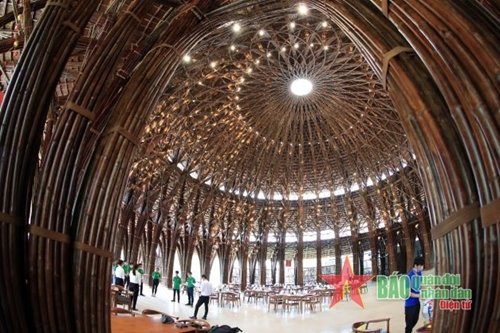 |
|
The bamboo architecture of Vietnam increases the attractiveness and offers interesting experiences to visitors. |
Beside the idea of exploiting indigenous cultural features, this complex will have a 1,000 sq.m. Muong Cultural Museum in the future, said Le Quoc Thinh. Vedana Resort has collected a large number of gongs and typical cultural artifacts of the Muong people to prepare for the museum establishment. What’s more, this Muong cultural space is not only an artifact display but also a storage address where people can deposit memorabilia and items associated with daily activities and production through generations.
    |
 |
|
Cuc Phuong National Park is home of many endangered species in the IUCN Red List. |
“Nho Quan district has always been focusing on preserving and promoting both tangible and intangible cultural values of ethnic minorities in the area,” said Hoang Khac Tiep, typically the Muong cultural beauty preservation and promotion project or the Muong gong culture preservation project.
Up to now, all communes in Nho Quan district have culture and sports centers. 100% of villages have cultural houses and sports areas to serve the locals with cultural, sports and community activities. In addition, Muong community activities are also maintained regularly thanks to the establishment of seven cultural and art clubs.
    |
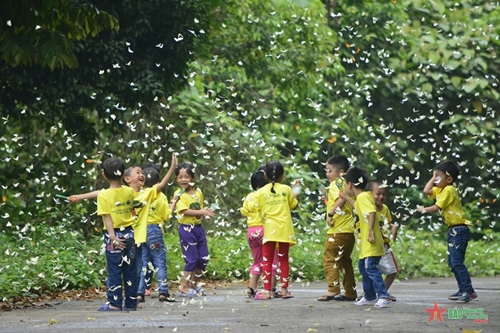 |
|
Visitors will be lost in the fairy forest when visiting Cuc Phuong National Park. |
“With a view to preserving the Muong ethnic culture, Nho Quan district has encouraged ethnic minorities to boldly invest in tourism, consulted and supported them to build tourism infrastructure in association with protecting the ecological environment for sustainable development,” Hoang Khac Tiep shared.
Translated by Van Khanh - Tra My